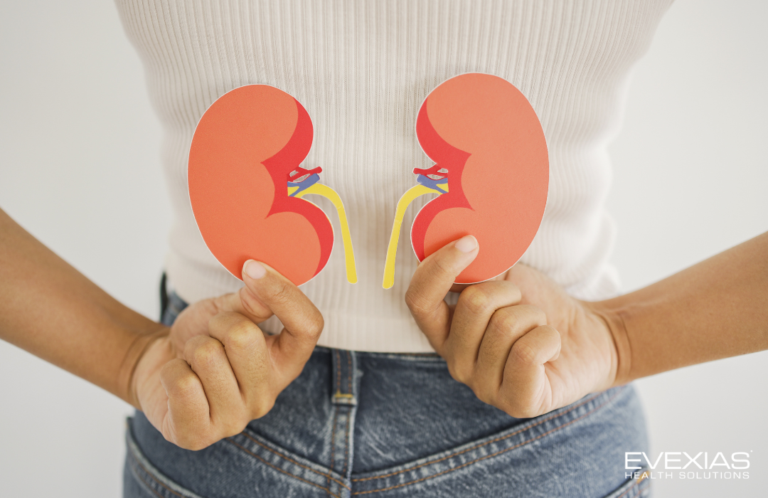Falling hormone levels and cessation of menstruation are the hallmarks of menopause. During this transformative time, there are some things women and their doctors expect, including hot flashes, mood swings, and vaginal dryness. But many women also experience a lesser-known condition that sometimes occurs simultaneously: low testosterone. This can introduce new symptoms that too often go unaddressed.
Testosterone is commonly thought of as a male hormone, but it is vital for women as well. In both sexes, testosterone contributes to sexual function, including desire, arousal, and orgasm, muscle and bone strength, mood, and cognitive ability. Low testosterone, or androgen deficiency, can have a significant impact on any or all of these.
While low testosterone can happen at any time in your life, it is more common after menopause. If you are having unexpected or hard-to-explain symptoms, particularly those of a sexual nature, understanding the connection between testosterone and menopause could help you find a path to recovery.
The Connection Between Testosterone and Menopause
In women, testosterone is produced in the ovaries, the adrenal glands, and from precursors in peripheral tissues. As you approach menopause, your ovarian hormone production declines. Estrogen and progesterone drop steeply, while testosterone falls more gradually. While some decline is natural and often goes unnoticed, some women experience sharper-than-normal drops in testosterone that lead to uncomfortable and disruptive symptoms. Women who are particularly sensitive to hormonal change may see sexual symptoms after even small declines.
Evaluating testosterone levels is important for women in a variety of circumstances:
Surgical Menopause
Women who have both ovaries surgically removed will experience a rapid drop in ovarian hormones. This will result in immediate menopause and may also cause symptoms of low testosterone.
Perimenopause
Since symptoms often begin in the perimenopause period, this is an appropriate time to test for androgen deficiency.
Postmenopause
Postmenopausal women who are experiencing low libido, fatigue, and muscle weakness should be evaluated for testosterone deficiency, particularly if these symptoms are not resolved with estrogen or progesterone-based hormone replacement therapy (HRT).
Other Causes
A number of health conditions may predispose women to androgen deficiency. These include Addison’s disease, corticosteroid therapy, chronic illness, and premature ovarian failure.
The Potential of Testosterone Replacement Therapy
When used conservatively, testosterone replacement therapy (TRT) can be a safe and effective treatment for the symptoms of low testosterone in women. However, it is not as commonly used as estrogen or progesterone replacement, and some health care providers are not as familiar with its risks, benefits, or optimal use. As a result, TRT may be underutilized.
In 2019, a cohort of medical organizations specializing in women’s sexual and hormonal health issued a Position Statement to provide guidance on the use of testosterone therapy. It supports the use of TRT “in doses that approximate physiological testosterone concentrations for premenopausal women” and offers recommendations based on the risks and benefits of testosterone therapy.
These recommendations are based on a systematic review and meta-analysis that found TRT effective for postmenopausal women with low sexual desire. When compared to women receiving placebo, estrogen, or estrogen/progestogen therapy, women receiving testosterone therapy experienced:
- A significant increase in frequency of sexually satisfactory events
- Increased sexual desire, pleasure, arousal, orgasm, responsiveness, and self-image
- Reduced sexual concerns and distress
Testosterone therapy was associated with an increased likelihood of acne or hair growth, but no serious adverse effects were noted. Additionally, while estrogen-based HRT may be contraindicated for women with a history of breast cancer, research suggests that long-term use of subcutaneous testosterone pellet therapy is not associated with an increased risk of invasive breast cancer.
Testosterone and Premenopausal WomenThe signs of excess testosterone in premenopausal women (facial hair, acne, hair loss, etc.) may be easy to spot, but the symptoms of low testosterone are not as readily observable. The loss of sexual desire and satisfaction, fatigue, mood disruptions, and cognitive changes associated with low testosterone are often attributed to other causes, including anxiety, depression, PMS, or just “getting older.” Without comprehensive hormone testing, the underlying cause of such symptoms is typically overlooked. If you are experiencing these symptoms, it’s important to take a closer look at your hormonal health. A hormone health specialist who understands the relationship between testosterone and menopause is your best ally for getting an accurate diagnosis and finding appropriate treatment. |
Finding Personalized Care
TRT can be used both alone and in conjunction with estrogen and/or progesterone-based HRT. Many women find that including testosterone as part of a comprehensive strategy for menopause allows them to achieve more complete symptom relief, but you do not have to undergo other forms of HRT to incorporate testosterone therapy in your treatment. Evaluation by a specialist will ensure that your symptoms are understood, appropriate diagnostic tests are administered, and effective treatment is prescribed.
The key to treatment success is expertise and personalization. By connecting with a doctor who specializes in hormonal health and can create a plan customized to your needs, you can set yourself up for the best outcomes.








